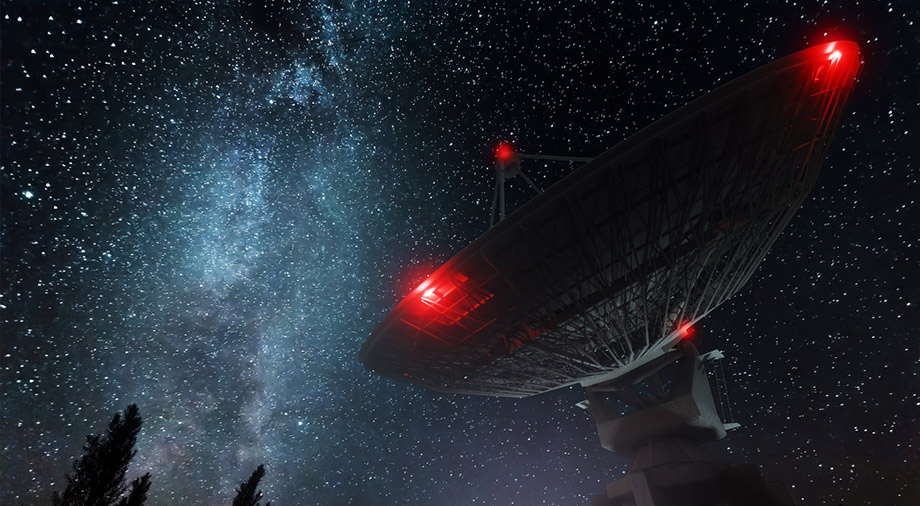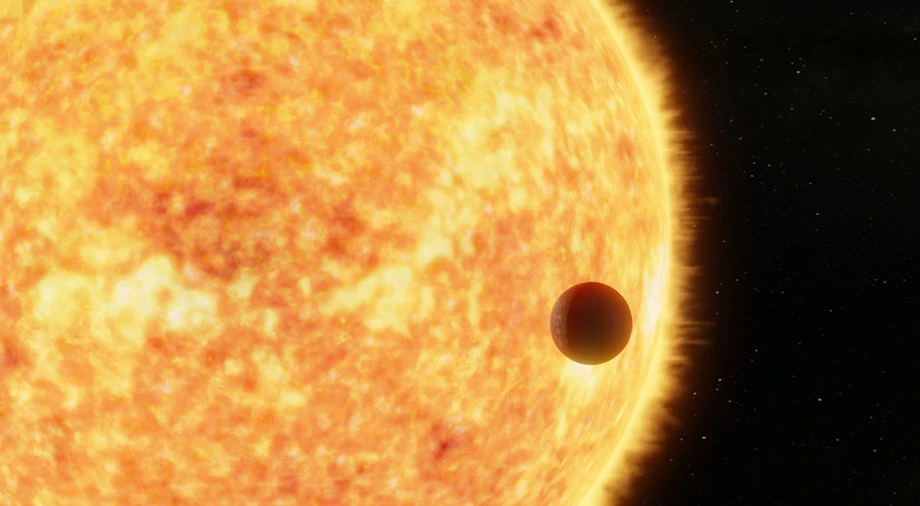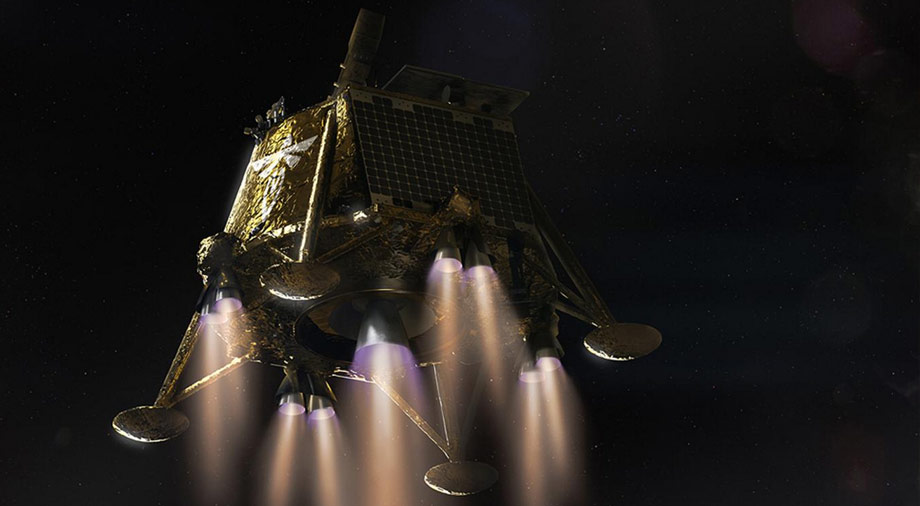On August 21, 1924, two days before Mars reached its closest point to Earth during the 20th century, the United States declared a “National Day of Radio Silence.” For a day and a half, all American radio stations paused their broadcasting for five minutes every hour. At this time, the staff of the US Naval Observatory listened to the airwaves, trying to pick up any signals from the Red Planet. The army even assigned a special cryptographer to decipher any messages intercepted from Martians.
By modern standards, this sort of attempt to search for intelligent life beyond Earth appears naive. But over the next hundred years, Earth’s search for extraterrestrial intelligence (SETI) has changed relatively little. The main focus is still detecting radio signals of artificial origin. At the same time, it was very difficult until recently to find any well-developed search programs: “green men hunters” could periodically listen to only some of the nearest systems that make up a drop in the sea from the total stellar population of the Milky Way.
However, thanks to recent technological progress, scientists have new tools at their disposal that can significantly increase the effectiveness of SETI. In this article, we will analyze the most promising methods that humanity can use to answer the age-old question of whether we are alone in the universe.
Listening to the radio
The search for artificial radio signals has been and still remains a priority method for detecting extraterrestrial intelligence. The first really productive steps in this direction were taken in the late 1950s and early 1960s, when legendary astronomer Frank Drake used a radio telescope with a diameter of 26 meters to study the nearby stars Tau Ceti and Epsilon Eridani at a frequency of 1420 MHz (a wavelength of 21.1 cm).
Why 1420 MHz? This frequency is associated with the most abundant element in the universe – hydrogen. When a hydrogen atom returns to a stable state, one quantum of light (called a photon) is emitted. Its frequency is exactly 1420 MHz. As a result, hydrogen can serve as a kind of spectral beacon, whose radiation is well known to all researchers of the starry sky. So, if transmitted on this frequency, then the signals can be detected during routine astronomical observations.
Moreover, 1420 MHz lies between relatively free regions of the electromagnetic spectrum, where the background noise of the Milky Way is almost inaudible. Some astronomers have even nicknamed this range “the cosmic watering hole.” In their opinion, radiation with a wavelength of 21 cm, surrounded by areas of relative radio silence, could be an excellent place for the “meeting” of civilizations scattered across the galaxy, where they can communicate and exchange ideas.
Since then, 1420 MHz and its associated frequencies have become the gold standard for SETI. The overwhelming majority of searches for traces of the activities of extraterrestrial civilizations were carried out in this precise area of the electromagnetic spectrum. From time to time, astronomers have even managed to detect suspicious signals, though subsequent investigations have almost always found rather mundane explanations for them. Thus, when a radio signal, designated BLC-1, was recorded from Proxima Centauri in 2020, it created a big splash. It was broadcast at 982.002 MHz, had a Doppler shift, and was observed for five hours. Alas, it later turned out that the signal had a completely terrestrial origin.
There is one notable exception: the famous “Wow!” signal recorded on August 15, 1977. Its characteristics and frequency corresponded exactly with how scientists predicted a signal from an alien civilization would look like. It was thus no surprise that the astronomer who discovered it circled the corresponding group of characters on the printout and wrote “Wow!”). But unfortunately, the Wow! signal has never been repeated. Astronomers have not been able to find it again, nor to determine its source. Over the next 45 years, many explanations have been put forward for the origin of the signal, but it seems that we will never know the truth.

‘Traditional’ radio-based SETI has long been criticized for being overly anthro-centric. Its supporters assume that hypothetical aliens will do exactly what humans would do – use radio communications and transmit in the 1420 MHz frequency region to facilitate their detection. But what if they don’t have radio technology? Or, alternatively, what if their civilization has reached such a level of development that it has completely outgrown the use of radio and is now using something much more sophisticated for communication, such as laser or even neutrino communication? What if they have radio communication, but they are silent, preferring to hide their existence? What if they are simply using different data compression methods? It may well be that what looks like “white noise” to us actually contains compressed messages spread over several frequency bands.
The story of the Wow! signal clearly demonstrates another weakness of the “traditional” approach – our own inconsistency. As a rule, participants in SETI projects rarely conduct constant observations of the same area of the sky. After making sure a particular zone doesn’t contain anything interesting, they move on to the next target, assuming that the alien radio broadcasts will be repeated regularly. But this assumption is just a guess. In the case of the Wow! signal, repeated attempts to record new transmissions continued for several minutes a day for several months, after which astronomers actually abandoned their attempts, judging further searches to be unpromising.
At the same time, it cannot be said that hunters for extraterrestrial intelligence completely ignore this criticism. For example, the organizers of the recent Breakthrough Listen project have opted for a much more organized approach, with regular sky observations and the use of the most powerful radio telescopes available to cover a much wider high-resolution frequency range. But all the same, the bet on the search for radio signals clearly cannot give us any guarantee of detecting extraterrestrial intelligence.
The Search for Technosignatures
Fortunately, scanning the ether is not the only way to detect alien intelligence. There is also the search for technosignatures: “traces” in the form of some measurable property or effect that advanced technologies leave behind. Of course, radio transmissions are also technosignatures. But for convenience, they are usually delineated into different SETI categories.
What qualifies as a technosignature? Take the Dyson Sphere, a hypothetical astro-engineering structure in the form of an envelope surrounding a star. It is believed that an advanced civilization could build it in order to receive maximum energy from its prime energy source. A building of this scale could be easily detected by existing telescopes by virtue of the excess infrared radiation it would emitted with an atypical spectral distribution.
An in-progress Dyson sphere or other large astro-structure of similar size, such as a Shkadov engine (a hypothetical machine designed to move an entire stellar system), could also produce asymmetric changes in the trajectory of the star’s light. Several years ago, astronomers were seriously considering that the system of star KIC 8462852 (more commonly known as the star “Tabby”) may be home to a highly developed civilization which is actually creating a Dyson sphere. While it’s true that researchers would nevertheless later rule out this explanation of the phenomenon observed with Tabby in favor of natural causes, Tabby has significantly raised interest in projects aimed at studying the stars in order to look for anomalous fluctuations in their brightness. Perhaps some of them will indeed prove to be evidence of a large-scale engineering project undertaken by an alien civilization.

Technosignatures can also accompany interstellar ships. For example, a starship with a magnetic sail would emit cyclotron radiation when it interacted with its environment. A ship equipped with an antimatter engine could be detected by the spectrum of photons it emits.
It is also worth considering von Neumann probes — for self-replicating spaceships that use minerals extracted in space to create exact copies. These copies would then be sent to other star systems, where the process would be repeated.
Research shows that the production of such probes would be accompanied by the emission of radiation in various ranges of the electromagnetic spectrum. And since the creation of new ships would go in an exponential progression, then the energy released during this process would also increase exponentially. Simply put, if one of the astronomers discovers an anomalous object whose radiation is growing exponentially and which is not similar to any known natural phenomenon, it can be recorded as a candidate for von Neumann probes. According to recent calculations, the process of creating probes will also be accompanied by radio emission, which may well be detected by existing radio telescopes, such as the Chinese FAST.
However, if we approach this issue from a realistic point of view, then a civilization that knows how to build von Neumann probes or Dyson spheres would most likely have long ago extended its influence over a significant part of our galaxy and we would see traces of its activity everywhere. It is much more likely that if there are other civilizations in the Milky Way, then they are more reminiscent of the terrestrial and are limited by the boundaries of their native system. This means that in order to find them, we will need to take a much closer look at exoplanets.
Exploring Exoplanets
The study of exoplanets is one of the youngest and fastest growing areas of astronomy. Just three decades ago, we didn’t know of any worlds in other star systems. We now know of almost five thousand. In this regard, a question logically arises: if any of the exoplanets known to us is inhabited, are there any external signs that could indicate it?
One of the most promising ways to detect such signs is to study exoplanetary atmospheres. If a planet is in transit (that is, we can see how it passes through the profile of its star) and is enveloped by gas, the light reflected through its gaseous atmosphere will shine in particular colors. These colors are determined by the chemical composition of the atmosphere, and astronomers can use the light emitted by planets to determine the composition of the atmosphere. With this analysis, we can predict whether the atmosphere is capable of supporting life. Moreover, spectral analysis can also provide information about the nature of an exoplanet’s atmosphere itself, including the presence of a cloud cover, the stratosphere, and even the overall color of the exoplanet.
For several years now, astronomers have been successfully using this technique to conduct chemical analysis of worlds outside our solar system. So far, this has involved large planets with big atmospheres, namely gas giants and occasionally super-earths. But as technology improves, astronomers are gradually moving to analyzing smaller worlds.

What can tell us that there is life on another planet? First on the list of key indicators is oxygen. The presence of a large amount of molecular oxygen in the atmosphere means that there is some kind of mechanism on the exoplanet that ensures oxygen replenishment. In Earth’s case, this is photosynthesis.
The presence of clouds of water vapor indicates that an exoplanet is likely to have liquid water. Methane is also of considerable interest. This gas is gradually decomposed by ultraviolet radiation, so its presence in an atmosphere means that there must be some source producing it on the exoplanet, either geological and/or biological. For example, 90% of Earth’s methane comes from bacteria.
Of course, while these are significant signs of possible life, they are still indirect. Much more powerful evidence of the existence of a technologically advanced civilization would be the discovery in an alien atmosphere of chemical compounds like chlorofluorocarbons (freons), which could really only be explained by industrial emissions rather than natural reasons.
In theory, atmospheric spectral analysis can also determine the chirality (“twisting”) of the organic molecules it contains. The cells of all terrestrial organisms use only amino acids, arranged in a leftward twist. With sugars, the situation is the opposite – living beings consume only “right” carbohydrates, twisted in the opposite direction. Of course, we do not know if this principle applies to alien life. But identifying a similar pattern on an exoplanet would be an important indicator of its potential habitability.
As we have said, atmospheric methods can only give us information about planets in transit through their star’s profile. And the probability that any given planet-like satellite of a star will be in transit with respect to the Earth is less than 1%. But alien hunters have other promising search methods as well, including surveying nighttime light emissions.
Images taken from space showcase the lights of cities on the side of the Earth experiencing night. If there is a technologically advanced civilization on an exoplanet, then it is reasonable to assume that it will also use artificial lighting. Its lights will create a permanent pattern that can be detected.
Another clue may be “heat islands” corresponding with cities: regions whose temperature is several degrees higher than the surrounding area. Scientists will be able to distinguish them from natural heat sources (such as fires or volcanic eruptions) by the degree of heating, as well as by the features of the spectrum of thermal radiation.
Of course, detecting cities by their nighttime lights or heat islands will require a new generation of observatories equipped with significantly more sensitive instruments than those available to modern astronomers. However, given the tremendous progress already achieved in the study of exoplanets, this no longer seems like an impossible task.
The Sun as a telescope
And, finally, we can’t neglect to mention the most direct potential means of searching for extraterrestrial intelligence: the direct photographing of exoplanets. It’s true that even the most powerful existing observatories in development would be physically incapable of capturing images in which it’s possible to distinguish any details of the surface of a world outside our solar system. However, we have a workaround in the form of our sun — more specifically, its gravity. The sun’s gravity is capable of acting as a lens, focusing light from extremely faint distant sources and increasing its brightness by many orders of magnitude.
To take advantage of this effect, it is necessary to place a telescope at the gravitational focus of the Sun, located at a distance of 550 astronomical units from the Earth. This is, of course, not an easy task. Our most distant spacecraft, Voyager 1, took 45 years to travel just 140 AU from Earth. In addition, such a telescope will actually be “disposable;” it can only be used to study a strictly-defined solar system, which must be selected before launch. Perhaps, say, a system with an exoplanet with an atmosphere containing a large amount of oxygen or some other life-sustaining substance, indicating its potential habitability.
But if astronomers manage to solve this problem and deliver the apparatus to its necessary destination, it will open up truly unprecedented opportunities. Even a modest one-meter telescope, placed at the gravitational focus of the Sun, would be able to take a photograph of an Earth-like exoplanet at a distance of 100 lightyears from us with a resolution of 1000 × 1000 pixels. With such an image, you could see details up to 10 km in size. For comparison, in order to obtain a picture with a similar resolution using traditional methods, we would need an observatory with a mirror with a diameter of 75 thousand kilometers. So, a gravitational solar telescope is just the thing that might be worth all the trouble involved.
Of course, for the time being, such an apparatus remains only a speculative project. But given science’s pace of development, it is quite possible that such a project could be carried out in the foreseeable future. And who knows? Perhaps, in some distant corner of the Milky Way, someone else’s gravitational telescope is examining our planet right now.






